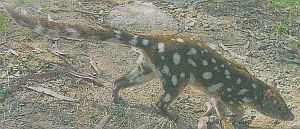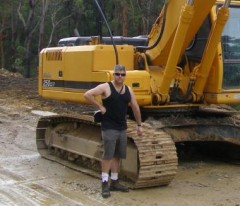About Us
Welcome to The Habitat Advocate
We are a not-for-profit business which focuses our attention on:
(1) The Habitat Advocate website – as a environmental conservation advocacy website
(2) Environmental Conservation Consultancy
We are an advocate for Wildlife Habitat Conservation and Deep Ecology.
‘Deep Ecology’?
“Is an environmental philosophy and social movement based in the belief that humans must radically change their relationship to Nature from one that is Anthropocentric (values Nature solely for its usefulness to human beings) to one that recognizes that Nature has an inherent value (a right to exist) in its own right.”
SOURCE: ^https://www.britannica.com/topic/deep-ecology
We are ‘A Voice For Native Habitat‘ – the motto of The Habitat Advocate.
The Habitat Advocate was conceived by its founder Steven Ridd in 2001. This was the year of his family’s arrival to live in The Gully. The Habitat Advocate has enjoyed many contributors and supporters (both local and interstate) in the 25 years to date since. Steven functions as a Conservation Consultant, Conservation Activist, Local Historian and Webmaster for The Habitat Advocate and its causes.
This website was established on 10th May 2006. And we chose our logo to be Australia’s endemic Tigerquoll – defensive and angry against threats to its survival. It is also referred to as a Spotted-tailed Quoll (scientific name is Dasyurus maculatus). It is nocturnal.
“The national quoll population has declined up to 90% since European settlement, with populations becoming fragmented and isolated. Numbers significantly declined following the introduction of strychnine baiting in the Canberra district in 1861. Today their greatest threats include destruction of habitat, fire, competition and predation from introduced carnivores and road mortality. Research has shown the quolls need large patches of forest with adequate denning resources (making dens) and relatively high densities of hollow-bearing trees, fallen timber, and medium-sized mammalian prey (such as possums, gliders and rabbits), small mammals, birds, reptiles, invertebrates and even domestic poultry).
SOURCE: ‘Spotted-tailed Quoll (Dasyurus maculatus)‘, Environment, Planning and Sustainable Development Directorate – Environment, Australian Capital Territory Government website, ^https://www.environment.act.gov.au/nature-conservation/conservation-and-ecological-communities/threatened-species-factsheets/spotted-tailed-quoll#:~:text=The%20Spotted%2Dtailed%20Quoll%20was,is%20listed%20as%20near%20threatened.]
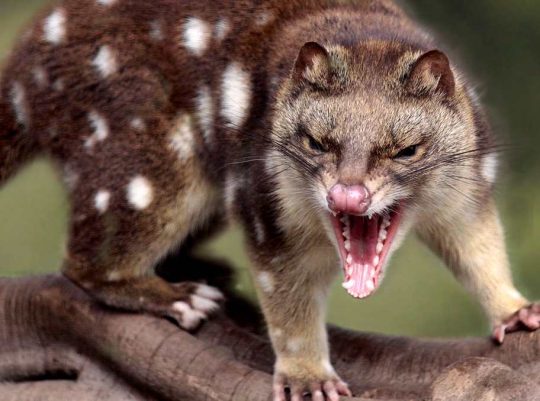
A ‘Tigerquoll’ (Dasyurus maculatus), the Australian mainland’s endemic largest carnivorous marsupial. It’s conservation status is ‘Endangered’.
.
Habitat Advocacy
.
The prime focus of this website is to advocate for greater, wider conservation of wildlife and awareness about the plight of native habitat.
We are inspired by American not-for-profit champion Robert Chambers, founder of ^More Than Wheels and 2006 Purpose Prize winner, who has said:
.
“I was old enough to know injustice when I saw it
and experienced enough to do something about it.”
[~ Robert Chambers, ^Source]
.
.
Habitat Conservation
.
‘Habitat Conservation’ is defined as:
‘A land management practice that seeks to conserve, protect and restore habitat areas for wild plants and animals, especially conservation reliant species, and prevent their extinction, fragmentation or reduction in range.”
.
[SOURCE: ^Wikipedia citing Habitat Planning Branch, ^’Habitat Conservation‘, California Department of Fish and Game, retrieved 2009-04-07.
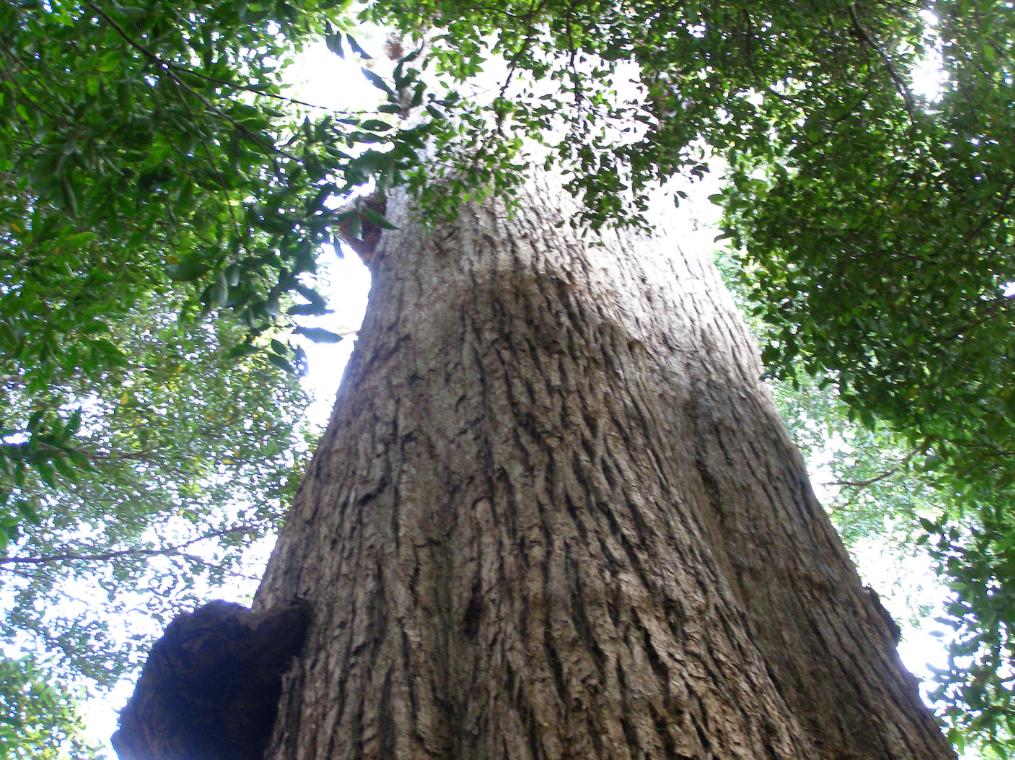 Giant Tallowood (Eucalyptus microcorys)
Once was common, Dorrigo Plateau, Northern New South Wales, Australia
[Photo by editor 20131026]
Giant Tallowood (Eucalyptus microcorys)
Once was common, Dorrigo Plateau, Northern New South Wales, Australia
[Photo by editor 20131026]
.
Habitat Threats
.
We are concerned about the persistence of many forms of human threats to wildlife and to native habitats particularly throughout Australia. We seek to publicise and openly challenge all threats.
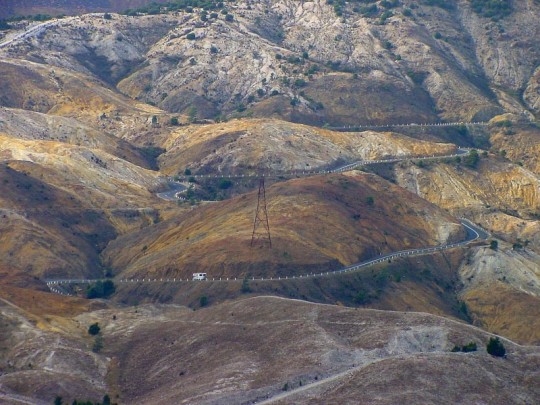 Queenstown’s denuded landscape in Tasmania, where once thrived dense pristine native forest habitat.
Queenstown’s denuded landscape in Tasmania, where once thrived dense pristine native forest habitat.
We identify the following material habitat threats to our region, to Australia and to our Planet (A-Z):
- Threats from Bushfire
- Threats from Darkside Ecologists
- Threats from Deforestation
- Threats from Development
- Threats from Disease
- Threats from Dumping
- Threats from Farming
- Threats from Ferals, Predators and Quarantine Failures
- Threats from Fishing
- Threats from Governmental Funding Neglect
- Threats from Governmemtal Mismanagement
- Threats from Greenwashing
- Threats from Hydro and Dams
- Threats from Mining
- Threats from Human Overpopulation
- Threats from Poaching and Poisoning
- Threats from Pollution
- Threats from Road Making
- Threats from Tourism and Recreation
- Threats from Urban Runoff
- Threats from War
- Threats from Weak Environmetal Laws
- Threats from Wildlife Pet IndustryUrban Runoff
- Threats from Zoos and Circuses
Sadly, this list is not complete.
All these threats are in many ways compounded upon a given natural habitat area and so undermining the health and survival chances of dependant native species.
We don’t subscribe to the oversimplified ‘global warning‘ come ‘climate change‘ cop-out excuse ideology – such simpletons can’t handle complexity or the hard truths.
.
.
Who Are We?
.
We are individuals and groups across the planet who, from time to time, contribute their knowledge, experience and skills constructively to the cause of ‘Wildlife Habitat Conservation’.
Steven Ridd B.Bus (Mgt), Commercial Helicopter Pilot, Dip. Outdoor Rec (Hons),. Dip. Project Mgt is the 2006 founder of The Habitat Advocate business. He is the Head Advocate of this website (a professed ‘armchair critic’):
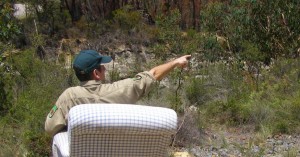
Steven has a background in Conservation sparked in 1999 when he decided to relocate from his terraced home in Randwick in eastern Sydney after a property developer had built two storey flats over his back fence with balconies and tenants looking into his backyard. In 2000, Steven and his family tree-changed from the city to edge of the town in Katoomba in the Blue Mountains. It happened to be the very same year that the Greater Blue Mountains World Heritage Area was declared by UNESCO.
Over the years since, Steven has contributed to the public discourse in Environmental Conservation as a Citizen Journalist in the local Blue Mountains Gazette newspaper often controversially critical of those who harm wildlife/natural habitat in the Blue Mountains. Between 2002 and 2008 Steven volunteered as a resident member of Katoomba environmental group The Friends of Katoomba Falls Creek Valley Inc. (founded by the late Neil Stuart in 1989) to campaign against environmental threats to the valley in which he lives which what subsequently has since gained protection (mostly) from land use development, also called ‘The Gully’. Steven was a member of the Blue Mountains Conservation Society for a number of years and between 2006-2007 he served as a director in the Board of The Colong Foundation for Wilderness in various capacities and a member of the Blue Mountains Commuters and Transport Users Association.
Since 2007, Steven has continued to be this website’s content Editor, Webmaster and provides not-for profit services as a Conservation Consultant. Steven is currently training as an Ecologist, and undertaking a Ph.D. in Environmental Conservation, Deep Ecological Philosophy and Environmental Activism.
.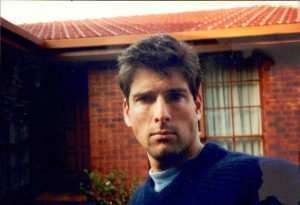 Steven John Ridd
Steven John Ridd
.
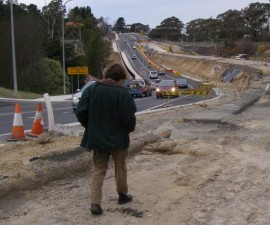 Our investigator
Our investigator
.
[Armed with digital camera ‘Take No Prisoners’ and video camera ‘Blue Eyes’]
.
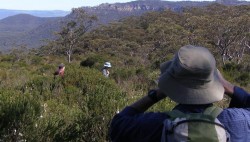 Our wildlife ecologist
Our wildlife ecologist
.
What Do We Do?
.
- We are A Voice for Native Habitat conservation – we advocate to protect and defend wildlife and native habitat
- We challenge threats to native habitat. We challenge the cultures and mindsets that drive those threats.
- We advocate reform initiatives to stop human activities that harm or threaten the integrity of native habitat
- We inspire and publicise community-based campaigns to protect native habitat
- We provide a conservation consultancy services to community groups within our local Blue Mountains World Heritage Area on a not-for-profit basis
.
Our Purpose
.
- To educate and promote greater awareness across the general community about the plight of wildlife native habitat and of the many ongoing threats that wildlife face, intended to benefit the public interest
- To report habitat news about wildlife and native habitat issues, threats and recovery actions
- To author and invite articles on wildlife and habitat conservation issues
- To advocate greater protection and conservation of native flora and fauna
- To challenge and critique those human actions, practices, behaviours, attitudes and underlying cultures that kill, harm or threaten natural flora and fauna
- The material on this website, including all webpages and articles, tends to be by its nature politically controversial. The material published is either the honest opinion of the authors concerned or otherwise reporting of news stories obtained from external sources, which include the source references. Externally sourced material is obtained from reliable sources so that we can be reasonably sure that the material is both factual and accurate.
- >More Details
.
Our Intended Benefits
.
- A timeless source of news about wildlife habitat related issues
- A forum for information sharing on in-depth analysis and debate on wildlife and habitat issues
- A networking resource for conservationists, environmentalists and simply anyone interested in wildlife conservation
- An advisory knowledge base of information and case studies to support individuals and groups campaigning to protect wildlife and native habitats.
- A reference library on wildlife, habitat science and related research
- A policy development think tank for:
- Reform initiatives to natural land management practices
- Fauna recovery initiatives
- Viable eco-initiatives for local communities to transition away from activities that harm wildlife and native habitats.
The direction of The Habitat Advocate starts with us having a clear purpose. Underscoring that purpose, we seek to follow certain philosophies to pursue specific aspirations to get there.
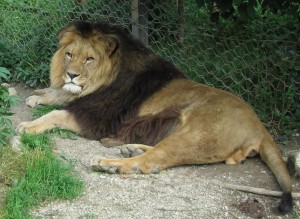 ‘The Barbary Lion, Atlas lion or Nubian lion (Panthera leo leo)
is a subspecies of lion that has become extinct in the wild.
The Barbary lion formerly ranged in North Africa from Morocco to Egypt.
The last known Barbary lion in the wild was shot in the Atlas Mountains in 1922′
^ http://en.wikipedia.org/wiki/Barbary_Lion
Naturally, this is not the aspiring direction of this website.
‘The Barbary Lion, Atlas lion or Nubian lion (Panthera leo leo)
is a subspecies of lion that has become extinct in the wild.
The Barbary lion formerly ranged in North Africa from Morocco to Egypt.
The last known Barbary lion in the wild was shot in the Atlas Mountains in 1922′
^ http://en.wikipedia.org/wiki/Barbary_Lion
Naturally, this is not the aspiring direction of this website.
.
NOTE: > = link to internal webpage ^ = link to external website
.
Our Origins?
To learn about when and why The Habitat Advocate formed, please read our story on Katoomba Falls Creek Valley in Katoomba.
> Our Purpose
.
> Habitat Philosophies
.
> Habitat Aspirations
.
> Habitat Advocacy!
> Habitat Campaigns
> Listening Post
.
> Habitat Sponsorship
.
Supporting The Habitat Advocate
.
We welcome support for our website. We call it ‘Habitat Sponsorship‘.
We are a not-for-profit organisation, yet to function we incur ongoing costs of website maintenance and development – which since our establishment in 2006, have amounted to about $2,000 per year.
All funds received for The Habitat Advocate are deposited into a dedicated bank account in the name of ‘The Habitat Advocate’; which is held with the Commonwealth Bank at Katoomba. All funds in this account are only used to pay direct costs to maintain The Habitat Advocate website – essentially website registration, hosting and development costs. The funds are not used for any other purpose.
We have no office, no paid staff, no equipment and it is an undertaking of the owners that this organisational model shall not change, ever. The owners of The Habitat Advocate do not draw any funds from this account, instead only offer their time, personal equipment and contributions on a strictly voluntary and philanthropic basis. Wildlife have no voice, and we seek to be part of their voice for rights, respect and justice.
Of course, we shall welcome additional support for our website from readers and from the general community. Our budget is lean, so it does not take a great contribution to meet costs and so remain sustainable.
To find out about the various options for supporting The Habitat Advocate, including:
-
Confidential Donations
-
Advertising with Us
-
Submitting pro-Conservation Articles
-
Purchasing Our Merchandise
-
Bequest to The Habitat Advocate
.
If interested, please visit our >Support The Habitat Advocate page on this website.
.
We are not a membership based organisation
.
We have actively chosen not go down the membership path, because we consider it more important to dedicate our scarce contribution time to focus on wildlife habitat causes, than to take on administrative tasks.
In our view, a membership structure would only distract us from the ‘Purpose’ and the ‘Intended Benefits’ outlined above on this page.
We believe people who share empathy with the wildlife habitat causes we take on, can be far more effective through Habitat Sponsorship. By adopting such an approach, we are confident that The Habitat Advocate shall continue to be sustainably ‘lean and keen’ for many years to come.
.
Thank you for visiting our website.
